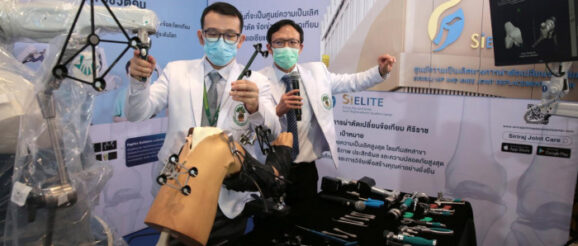Innovation key to affordable healthcare


We all want good health and decent public health welfare. When we fall ill, the cures are also much more effective thanks to modern medical advancements. But the soaring costs of healthcare have made it beyond most people’s grasp.
Over the past two decades, global healthcare spending has more than doubled, skyrocketing from $4.2 trillion (145.8 trillion baht) in 2000 to an astounding $8.5 trillion in 2019.
Thailand is not much different. Over the same period, Thailand’s health expenditure per capita has risen from 2,152 baht in 2000 to 10,197 baht in 2019, according to World Bank’s information.
Such a skyrocketing increment in medical treatment costs has become a major concern — not to mention hardship for ordinary people who seek convenient and decent medical services.
But there is still hope to make healthcare more affordable and accessible for everyone.
To start, we need to examine why healthcare services are much more expensive than other consumer goods despite the availability of modern technologies.
The late US Economist William J Baumol provided explanations for the high cost of healthcare — as well as solutions.
Mr Baumol highlights two types of work: labour-intensive and machine-intensive. Technological advancements and increased productivity lead to decreasing costs of goods produced by machines over time.
However, goods and services that heavily rely on human labour and skills, such as healthcare services, cannot improve productivity significantly. As the wages of healthcare workers rise with inflation, so do the costs of healthcare services.
Without improving the efficiency of healthcare services, costs will continue to rise and become unaffordable for the public.
Mr Baumol calls the rising cost of goods and services that heavily rely on human labour the “cost disease”. Therefore, lowering healthcare costs involves making healthcare services more efficient and making healthcare technologies more accessible.
To lower medical service costs, the government must invest in innovation. With the help of advanced medical equipment and software or even simple online communication, labour-intensive healthcare services will be more efficient and productive.
For example, doctors at Srinagarind Hospital in northeastern Khon Kaen province have used generic applications like Line to conduct telemedical consultations, resulting in efficiency gains of 40-60%.
Moreover, patients can now receive follow-ups without having to travel to the hospital. The telemedicine service can expand medical services to patients.
In terms of financial costs, the telemedicine app helps save the cost of transportation and time. The beauty is that innovation does not have to be advanced and pricey technology that is only affordable for rich countries or cash-rich private hospitals.
It can be a simple technological solution that anyone can access. The case of Srinagarind offers an example of simple telemedicine that only makes use of an available online app.
Product innovation lowers the prices of medical devices. For instance, successful research and development in dentistry have led to domestically produced dental implants costing between 25,000 and 28,000 baht. The equivalent imported options can cost up to 80,000 baht.
Critics may contend that technological advancements also contribute to rising healthcare costs, as people are often willing to pay more for better technology. However, once the market is large, this price problem diminishes. Through economies of scale, lower profit margins become economically viable for innovative products.
It must be mentioned that government needs to play a role in promoting innovation, especially those used for public service.
In this case, the National Science and Technology Development Agency (NSTDA), a state innovation-promoting body agency, has played a significant role in promoting innovation. NSTDA has launched the Thai Innovation List initiative to support and finance innovative products.
This strategy promotes domestic innovation, allowing manufacturers to scale up and innovate further. When customers can access better products at lower prices, their healthcare costs will decrease.
Lower costs through innovation do not mean lower quality. An example is Thai Reach — a non-profit organisation in Khon Kaen that supports low-cost prosthetics and medical devices. Thai Reach has developed 3D-printed prosthetics based on open-source designs from the E-NABLE international volunteer network.
By using open-source technology, they can save on research and development costs. Furthermore, their prosthetic arms are made entirely of lightweight plastic, ensuring comfort during extended use.
Innovation is the key to combating rising healthcare costs. Process innovation enhances the efficiency of healthcare services and increases productivity. Meanwhile, product innovation helps lower the prices of medical devices, making them more affordable.
However, it is important to remember that innovation alone is not a panacea. Thailand has many homegrown innovations. But they are often overlooked due to biases against local technologies.
It is vital, therefore, for the general public to overcome their prejudice. Health professionals, meanwhile, also play a crucial role by adopting local innovations that adhere to set standards and have been certified by relevant authorities.
This collective effort will lead to improved healthcare services and lower prices for medical technologies and devices, paving the way for affordable and accessible healthcare.
When that happens, quality healthcare will no longer be beyond our grasp.
Natcha Yongphiphatwong is a Researcher at Thailand Development Research Institute (TDRI). Policy analyses from the TDRI appear in the Bangkok Post on alternate Wednesdays. Dr Saowaruj Rattanakhamfu and Mathis Lohatepanont also contributed to this article.
